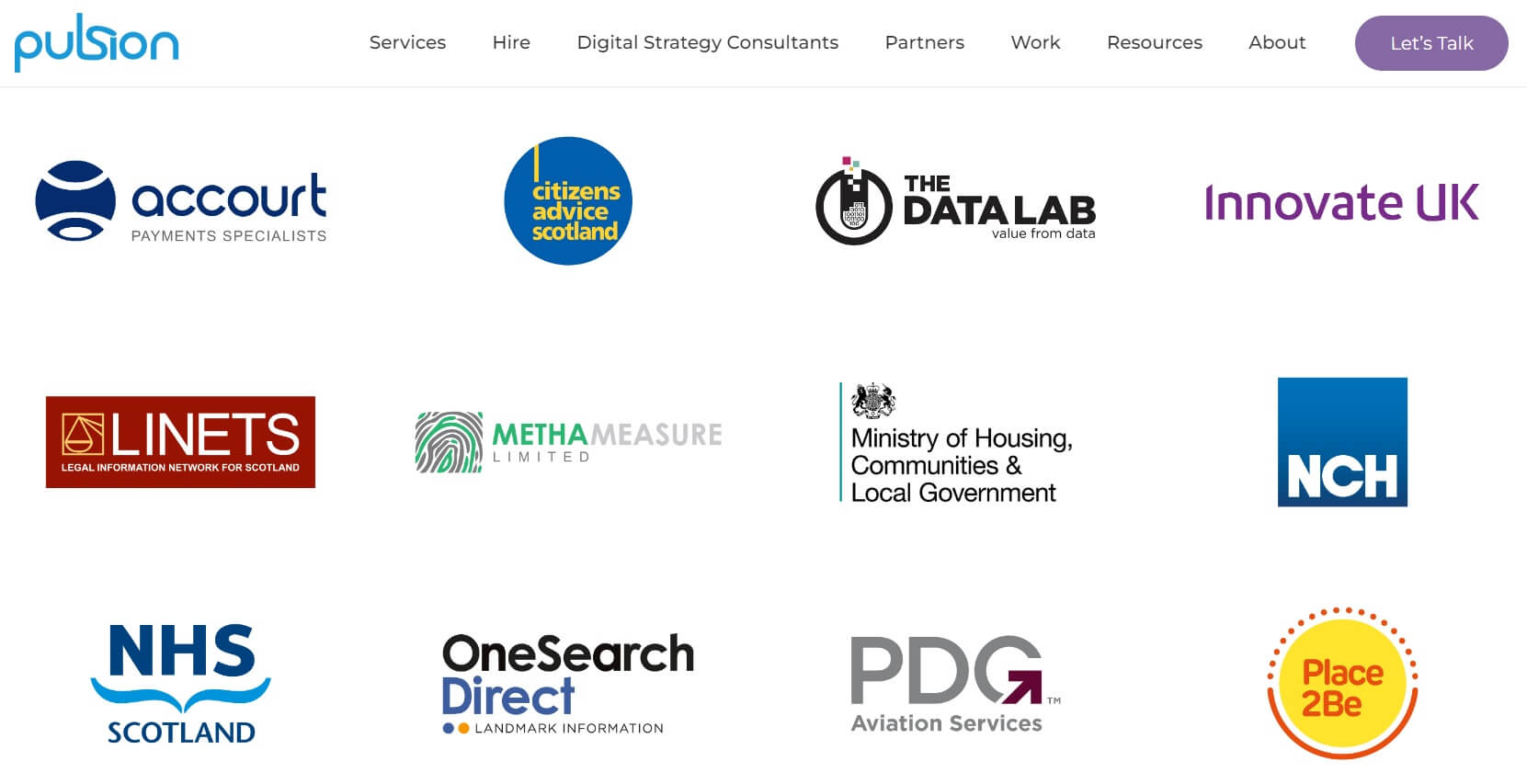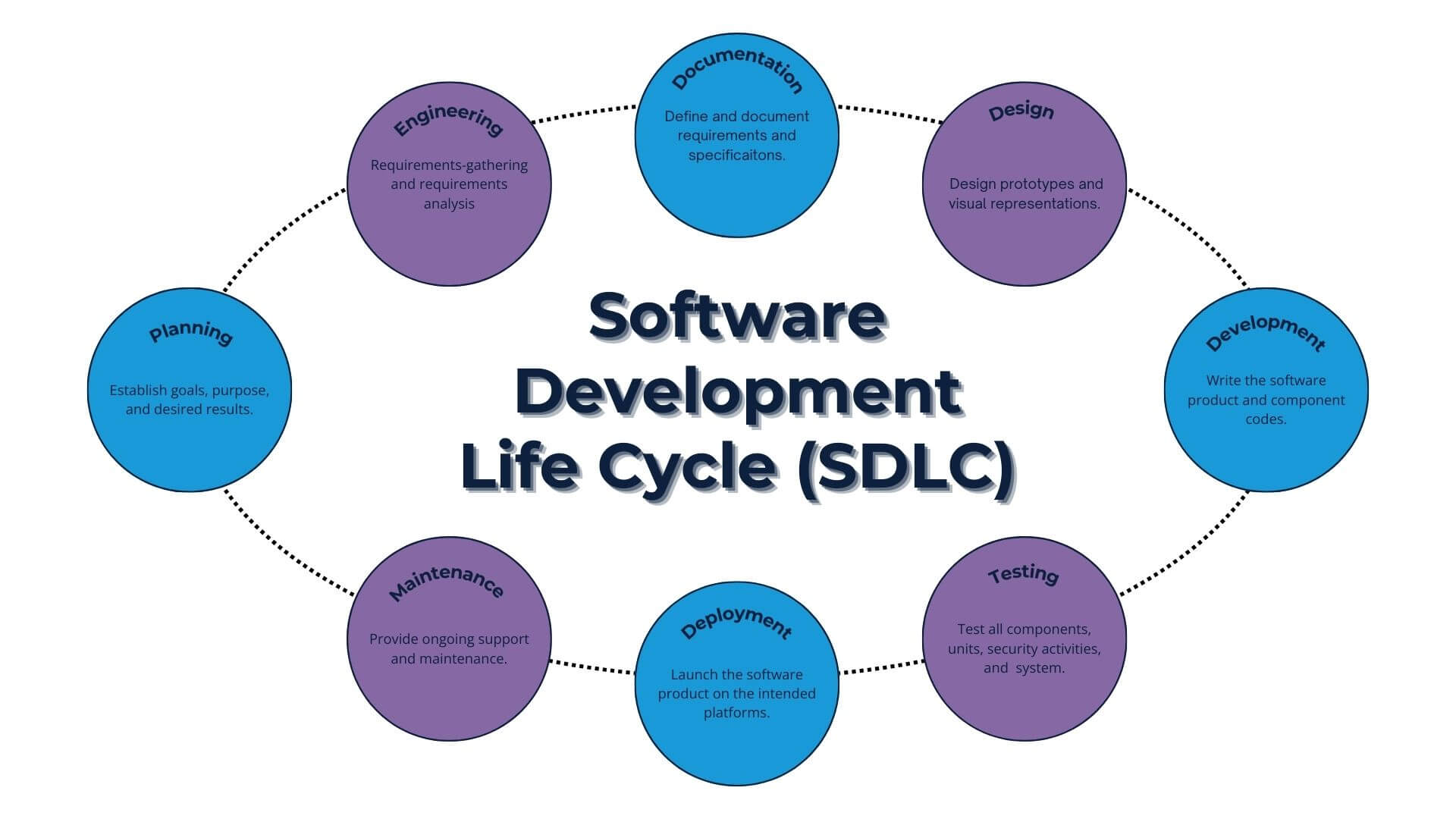A software development roadmap is a high-level overview showing the progress of software development processes, development efforts, and strategic objectives.
A product roadmap is a planning tool to define the visual progress of a software project to ensure project managers deliver on time and meet strategic objectives approved by stakeholders.
Did you know how project management improves the success rate of IT projects? Interestingly, 73% of companies using project management plans meet the project’s goal or intent.
Additionally, 63% of projects meet their budgets, and 59% of projects are delivered on time. A software development roadmap is integral to project management.
Let’s discover everything you need to know about a software developer roadmap.
What Is a Software Development Roadmap?
A software development roadmap is a project planning process to ensure constant progress and consistent development efforts to complete a software product, including web and mobile applications.
Stakeholders, business owners, and a project manager design and plan an overview of expectations and directions in a visual representation. The project manager ultimately designs the final roadmap.
A software roadmap must outline product functionality, available resources, and the deadlines for tasks the development team must complete for a software project.
Creating a product roadmap is a process that allows feedback from engineers, business leaders, and customers. Feedback is merely one benefit of a product roadmap in a business or market.
Types of Software Development Roadmaps
Multiple software development roadmaps exist, including internal, external, purpose-based, and quantity-based types. A software product roadmap belongs to different types, often depending on the target audience managers define when creating the product roadmap.
Each outlines end users’ functionality, team members’ deadlines, and the tools necessary to develop the business ideas with the appropriate technologies and data. However, an expert product team will use the appropriate roadmap to outline new features and create tasks for the internal team.
Internal Roadmap
An internal product roadmap will focus on outlining the product’s strategic objectives for development team members. It will include customer value prioritisation, target release dates, and milestones. Teams will design a product based on data and solutions outlined in the internal roadmap.
Internal roadmaps also focus on data for company management, a sales team, executives, and internal employees, and these roadmaps include details about the business strategy, expected revenue, and testing efforts. Internal planning and road mapping will serve an internal company team.
External Roadmap
An external product roadmap will target external stakeholders and app users on the market. External roadmaps are a strategy to excite consumers, showing them new features, and company solutions from the intended software product. These plans focus on customer deliverables.
A product team will track customer expectations before choosing databases or any data relevant to the product roadmap. A customer knows what they want, and product teams will align the customer needs with the business objectives to design an overview worthy of exciting consumers.
Single vs. Multiple Product Roadmap
A product roadmap can describe the development processes and expectations for a single or multiple product ideas. A product manager can save time with a client by providing a multiple-product roadmap with the relevant documentation, milestones, features, and developer responsibilities.
Multiple software roadmaps will reveal strategic plans for hardware and software infrastructure and features. Single and multiple-product roadmaps can outline and track the responsibilities of team members or serve as an example for external or internal planning.
Theme vs. Outcome vs. Status-Orientated Roadmap
Often, a strategic plan outlines an overview of themes, outcomes, or statuses. Development teams gain a better understanding of planned features with this type of product roadmap. Theme-orientated planning focuses on delivering planned value.
An outcome-orientated planning process focuses on the results or consequences, and status-orientated planning outlines the developer’s progress and milestone achievements. An example of status-orientated internal roadmaps would be one where developers have set milestones for feedback.
The Benefits of Software Development Roadmaps
A project plan benefits users, stakeholders, engineers, and managers. Here are some advantages of software development roadmaps:
The team prioritises the key features based on specific product and technology decisions
Software engineers understand their roles, responsibilities, and project contributions
Prioritisation decisions become more intelligent among team members
Communication improves among the development team and stakeholders
The process reveals risks and gaps related to the project
Provides a visual tool for the technical team to explain everything to stakeholders
The entire development process becomes transparent for everyone involved
Why Do You Need a Software Development Roadmap?
Every product needs to have a bigger picture, even if expectations, resources, and product ideas are constantly changing. Moreover, it helps to motivate engineers toward your business goals when they see how they contribute to the bigger picture when creating your software.
Meanwhile, communication and feedback are essential throughout the development process. It helps to have visual data to aid communication before creating software with development teams. You also want to maintain some form of involvement when you develop the next success with your intended program.
Who Builds the Roadmap?
A roadmap is developed by product or project managers, product owners, and key stakeholders. However, the project planning occurs at different stages, depending on the model developers use. Popular software development methodologies include Agile, DevOps, Iterative, and Waterfall.
Why Use Pulsion for Software Development Roadmaps?
Learn about us to know how long we’ve worked in software development. Our clients and case studies show some of our work with well-known brands like NHS Scotland and Innovate UK.

Our diverse team works with custom software development and mobile app development daily. We think outside the box to ensure your project’s success, beginning with a roadmap.
Contact us to discuss your needs, goals, and software product vision.
Software Development Roadmap Tools
Planning a roadmap for your company development project with exceptional features and ideas is possible with roadmap tools. Here are some online tools for creating roadmaps:
Aha!
Asana
Figma
Jira
Monday.com
ProductPlan
Roadmap Planner
Roadmunk
Trello
How to Create a Software Development Roadmap in 5 Steps
The success of developing your business project before it enters the market depends on the five road-mapping steps. Developing project roadmaps to ensure success requires teams to carefully capture the key of each step or task. Let’s help you create a roadmap like a professional product team.
Step 1: Define the Reason
A software development roadmap begins with why you want to develop the intended product. Identify the purpose, goals, objectives, and product strategy for the team. Why do you want the product team to develop it, what problem does it solve, and why will the market welcome the product?
Step 2: Describe the Audience
The second step is to define the target audience for your software development roadmap. Often, product teams create use cases or stories to visually describe the ideal teams or users who will interact with the business product for an external roadmap.
Each roadmap you create will target specific teams for different roadmap types. Also, define the roles and responsibilities of different teams. For example, developing the product features requires you to assign roles and responsibilities to development teams.
Step 3: Create Priorities
Task priorities are the next part of your project plan. Which tasks are top priorities for developing first? Which tasks can wait until the next milestone? Determine whether developers will design databases first, and at which milestone they have to test the product.
Product test stages are critical to cybersecurity, making it an essential priority. However, you can test a product feature you haven’t developed yet. Prioritise when you design and test each program feature, hardware component, and overall product functionality a customer expects.
Step 4: Create the Roadmap
Create a software roadmap you’d show a company client. Add the necessary documentation, user stories, planning strategies, tasks, test milestones, realistic timelines, and customer functionality. Put your ideas on paper, or use a software development roadmap tool to help design the visuals.
Step 5: Review the Roadmap
Frequent progress checks are necessary because no roadmap is perfect. Changing requirements can also encourage you to review a software roadmap. For example, databases may need an upgrade with changing technologies, or a tool may no longer be expected by customers.
Software development is dynamic, and changing a roadmap’s databases, functionality, process, client features, program ideas, or external tool integrations is simply part of the development process. Software roadmaps change, and a product team often reviews the ideas and planned features.
Tips for a Software Development Roadmap
Teams creating a software development roadmap often use a development life cycle, add documentation to support the visuals, and present the roadmap to stakeholders.
Software Development Roadmap Best Practices
A software roadmap from an experienced development team will follow best practices. An experienced project manager also follows the software development roadmap best practices, which include:
Adding just enough detail for the right audience
Focusing the roadmap on how short-term milestones relate to long-term goals
Reviewing and adjusting the roadmap frequently
Ensuring all relevant stakeholders and developers have constant access
Getting regular feedback from stakeholders to ensure the business objectives align
Documentation for Software Development Roadmaps
Software development roadmaps accompany technical specifications, business requirements, product requirements, UX/UI requirements, user requirements, and quality assurance documentation. Not all of the documentation accompanies roadmaps, depending on the target audience.
However, the requirements documentation will further outline technical aspects for the engineering team as one example in an internal roadmap, including functional and non-functional requirements.
What Are Functional vs. Non-Functional Requirements?
Functional requirements outline the system’s functions and components, while non-functional requirements define how the system responds to user inputs. Developers need specifics in the documentation you present with a software roadmap, also including tech stacks for the product.
See also: What Are Functional and Non-Functional Requirements?
The Software Development Life Cycle (SDLC) and Processes
Developers use different methodologies. However, each follows a specific development life cycle. The SDLC lets a project manager align the roadmap steps with the development process. Planning is essential to the SDLC process for any company project or product planning.

See also: Software Development Life Cycle (SDLC)
How to Present the Software Development Roadmap
Creating a software development roadmap is the initial step before you present it. Getting approval means you need buy-in from a development team and software customer, which may include management, product owners, business stakeholders, or company leaders.
Present plenty of visuals, user stories, epics, requirements, and documentation to more easily achieve roadmap approval. The software team and business leadership need context to understand the product roadmap clearly the first time and approve the milestones, process, and solutions.
Summing Up Software Development Roadmaps
Planning a roadmap with milestones, test boundaries, and recommended databases for a customer can feel challenging for a new project manager. Focus on the online tools available to help you.
Alternatively, let our engineering team track data and maintain your market value with our experience in building roadmaps. Contact us today to create an example of your business vision for future users.
Software Development Roadmap FAQs
What Is a Product Technology Roadmap?
Technology roadmaps are high-level overviews and outlines of the technical strategies and technologies in an organization. Internal teams use IT roadmaps to make technical decisions related to information and technology within an organization to ensure a higher chance of success.
What’s the Difference Between IT Roadmaps and Product Roadmaps?
An IT roadmap outlines technology plans, goals, and infrastructure. On the other hand, a product roadmap outlines the development team, process, and timelines in a software development life cycle. A product roadmap is a strategic plan a product team uses to add planned features or new features.
Product teams use strategic objectives to as a planning tool in a product roadmap. Developers use the product roadmap to design a software product with new features to excite end users. The product team ensures the roadmap defines resources, roles, and tasks before developing the project.
What Is a Roadmap in Software Development?
Engineers and programmers also follow a career roadmap, often called a programmer roadmap. The roadmap outlines courses for specific skills and career growth. The roadmap milestones and process will depend on which type of engineering or programming students wish to learn.
See also: Types of Software Development Explained
What Do You Need to Be a Software Developer in the UK?
Let’s forget about the skills, courses, and years you spend studying engineering in the UK because too many young engineers overlook the best practices, the cornerstone of what you need in the industry. Read more about our best practices and strategic considerations every UK engineer needs to know.
Where Can I Find Software Developer Graduate Programs?
We offer graduate opportunities at Pulsion Technology. We work with the most innovative international industries and will mentor your career growth. Meanwhile, working at Pulsion is about adopting a culture of dedication and hard work. Nothing helps you progress more than hard work or dedication.







